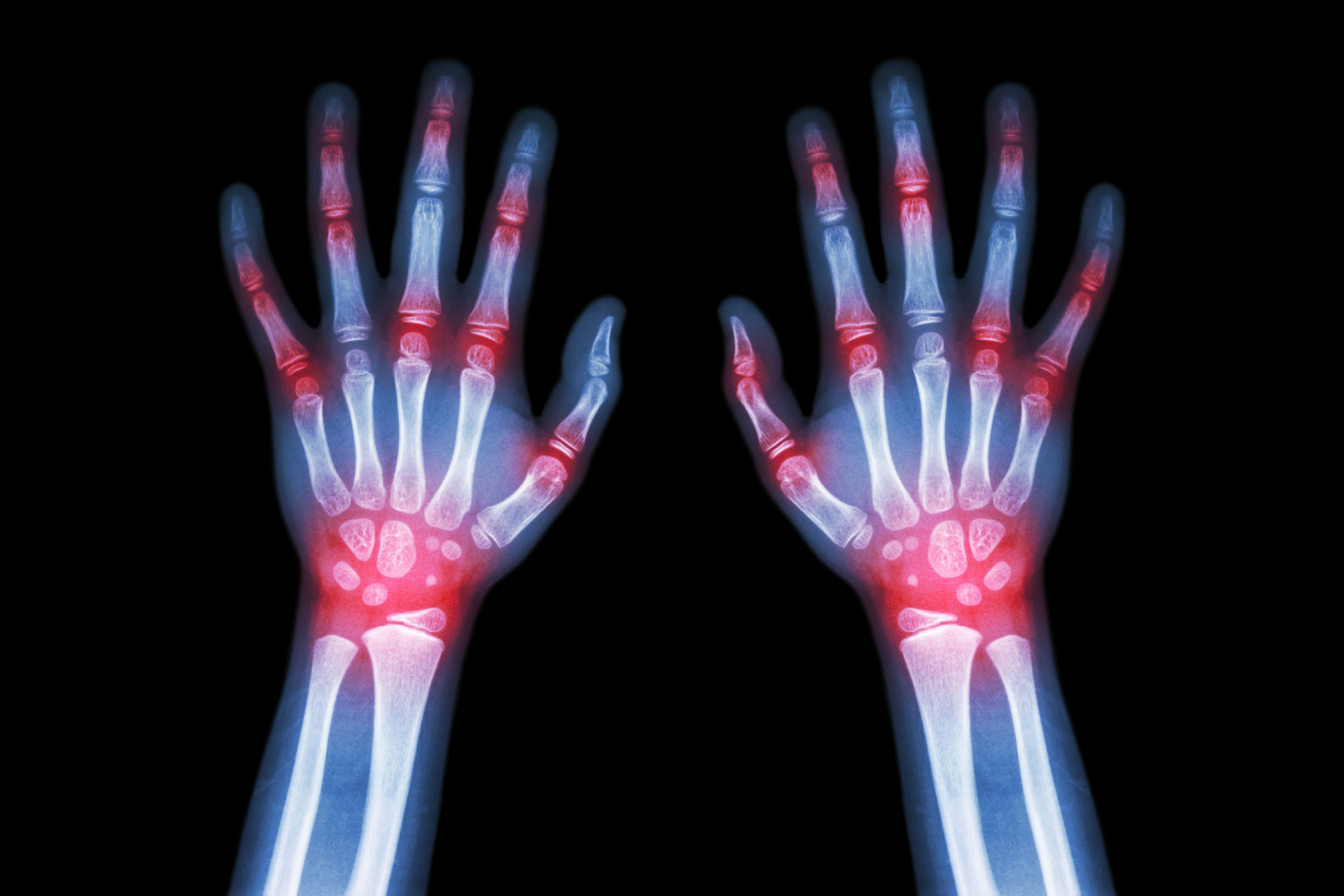Treatment Options for Complex Cases of Juvenile Idiopathic Arthritis
Children affected by juvenile idiopathic arthritis, manifesting as non-systemic polyarthritis, sacroilitis or enthesitis, have a number of therapeutic options available. In this article, we outline the options.
Juvenile arthritis (©AdobeStock_StockDevil)

Children affected by juvenile idiopathic arthritis, manifesting as non-systemic polyarthritis, sacroilitis or enthesitis, have a number of therapeutic options available. Treatments include NSAIDs, systemic and intraarticular glucocorticoids, and DMARDs. But, knowing which therapy to initiate can be critical to preventing permanent damage and giving patients their best outcomes.
To help identify the best treatment course, the American College of Rheumatology and the Arthritis Foundation partnered to update treatment guidelines from 2011. The recommendations offer direction for clinicians, caregivers and patients when making treatment decisions. A shared decision-making process that addresses patient’s values, preferences and comorbidities is recommended.
Here, we outline the guidelines, beginning with the general recommendations.
Continued on the next page…
General Recommendations for Juvenile Idiopathic Arthritis and Polyarthritis
1. NSAIDs are conditionally recommended as adjunct therapy.
2. Methotrexate is conditionally recommended over leflunomide or sulfasalazine.
3. Subcutaneous methotrexate is conditionally recommended over oral methotrexate.
4. Intraarticular glucocorticoids are conditionally recommended as adjunct therapy.
5. Triamcinolone hexacetonide is strongly recommended over triamcinolone acetonide for intraarticular glucocorticoid injections.
6. Bridging therapy with limited oral glucocorticoid course (<3 months) during therapy initiation or escalation in patients with high or moderate disease activity is conditionally recommended.
7. Conditionally recommend against bridging therapy with a limited oral glucocorticoid course (<3 months) in low disease-activity patients.
8. Strongly recommend against adding chronic low-dose glucocorticoids, irrespective of risk factors or disease activity.
9. Initiating treatment with a biologic (etanercept, adaliumab, golimumab, abatacept, or tocilizumab), combination therapy with a DMARD, is conditionally recommended over biologic monotherapy.
10. Combination therapy with a DMARD is strongly recommended for infliximab.
11. In patients who have or are at risk for functional limitations, using physical therapy and/or occupational therapy is conditionally recommended.
Recommendations for initial and subsequent treatment continued on next page...
Recommendations for initial and subsequent treatment
Initial therapy
1. Initial therapy with a DMARD is strongly recommended over NSAID monotherapy.
2. Methotrexate monotherapy as initial therapy is conditionally recommended over triple DMARD therapy.
3. For patients without risk factors, initial therapy with a DMARD is conditionally recommended over a biologic.
4. In patients with risk factors, initial therapy with a DMARD is conditionally recommended over a biologic. (Biologic inclusion may still be preferred in some cases.)
Subsequent therapy in low-disease activity patients (cJADAS-10 ≤2.5, at least 1 active joint)
1. Despite DMARD or biologic, escalating therapy is conditionally recommended over no escalation of therapy.
Therapy for moderate or high disease continued on next page...
Subsequent therapy in moderate or high disease activity patients (cJADAS-10 >2.5)
1. Despite DMARD monotherapy, adding a biologic to the original DMARD is conditionally recommended over changing to a second DMARD.
2. In patients receiving DMARD monotherapy, adding a biologic is conditionally recommended over changing to triple DMARD therapy.
3. In patients receiving a first TNFi (with or without DMARD), switching to a non-TNFi biologic (tocilizumab or abatacept) is conditionally recommended over switching to a second TNFi.
4. Despite a second biologic, using a TNFi, abatacept, or tocilizumab (depending upon prior biologics received) is conditionally recommended over rituximab.
JIA with sacroiliitis treatment recommendations continued on next page...
Recommendations for juvenile idiopathic arthritis and sacroiliitis treatment
1. Treatment with an NSAID is strongly recommended over no NSAID treatment.
2. Despite NSAIDs, adding a TNFi is strongly recommended over continued NSAID monotherapy.
3. Despite NSAIDs, using sulfasalazine for patients who have contraindications to TNFi or have failed more than one TNFi is conditionally recommended.
4. Despite NSAIDs, there is a strong recommendation against using methotrexate monotherapy.
5. Despite NSAIDs, bridging therapy with a limited course of oral glucocorticoids (<3 months) during therapy initiation or escalation is conditionally recommended.
6. Despite NSAIDs, intraarticular glucocorticoid injection of the sacroiliac joints as adjunct therapy is conditionally recommended.
7. Use physical therapy is conditionally recommended.
JIA and enthesitis continued on next page...
Recommendation for juvenile idiopathic arthritis and enthesitis treatment
1. NSAID treatment is strongly recommended over no treatment with NSAIDs.
2. Despite treatment with NSAIDs, using a TNFi is conditionally recommended over methotrexate or sulfasalazine.
3. Despite NSAID treatment, bridging therapy with a limited oral glucocorticoid course (<3 months) during treatment initiation or escalation is conditionally recommended.
4. In patients at risk for functional limitations, using physical therapy is conditionally recommended.
REFERENCES
Ringold S, Angeles-Han S, Beukelman T, et al. “2019 American College of Rheumatology/Arthritis Foundation Guidelines for the Treatment of Juvenile Idiopathic Arthritis: Therapeutic Approaches for Non-Systemic Polyarthritis, Sacroiliitis, and Enthesitis.” Arthritis & Rheumatology (2019), doi: 10.1002/art.40884